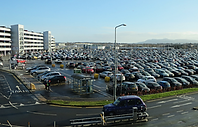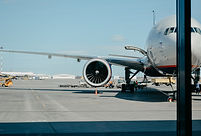Aviation: climate change
The UK is the 4th highest emitter of CO2 from aviation in the world. In a climate emergency, real carbon zero action is essential. However, Newcastle Airport’s Net Zero Carbon 2035 policy (here) falls far short. Why?
-
There are no measurable targets and no detailed plan
-
2035 is far too late
-
It is about the Airport company only.
-
It excludes flights, aircraft operators and airlines and people driving to the airport.
-
It excludes on-site tenants, franchisees and service providers
-
The Airport’s 2035 growth plan, if achieved, would wipe out any benefits
See our detailed response here
The UK aviation sector has massive expansion plans, that would take its carbon emissions way above even a generous future cap. more...
Aviation: Pollution


-
It's not just aircraft that pollute when they're flying. Airports directly and indirectly help to add to pollution levels with almost everything they do.
-
Airports generate air pollution from a number of sources including on-site power and heating, equipment to service aircraft, on-site vehicles, airport-related traffic on surrounding roads (staff, passengers and freight) as well as aircraft.
-
The main pollutant of concern around airports is nitrogen dioxide (NO2). NO2 is formed by nitrogen oxide (NOx) emissions from surface traffic, aircraft and airport operations. PM2.5 is also of concern, since particulate emissions from jet exhausts are almost all in this fine fraction.
-
NOx in the lower atmosphere contributes to the production of ozone; ozone in the lower atmosphere is a pollutant, and contributes to global warming. Nitrogen oxides from high-altitude supersonic aircraft are thought to damage the stratospheric ozone layer, the protective layer that filters out harmful radiation from the sun.
















